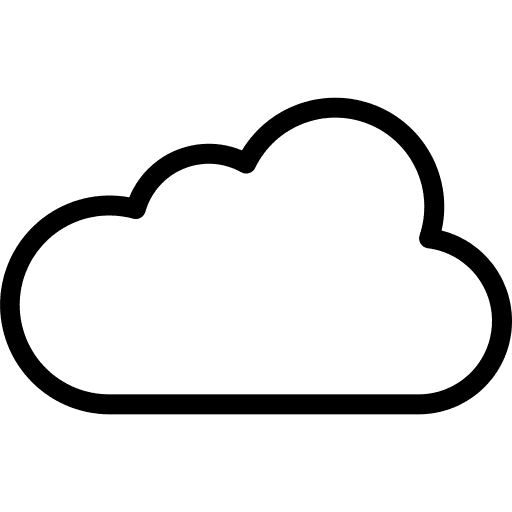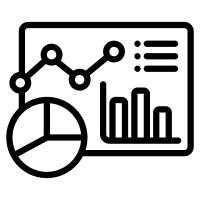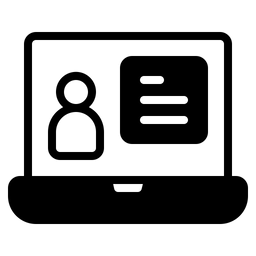See why growth companies choose BluIQ
The Ultimate in Flexibility and Scalability for Subscription Management and Billing.

BluIQ is a configurable platform that bridges the gaps between your CRM, ERP and related business processes.

Customize Your Monetization Platform Quickly and Cost-Effectively.

The Ultimate Flexibility and Scalability to Process Complex Data Staging & Mediation Scenarios with Ease

End-to-end Integration for Seamless Order Activation and Provisioning

BluLogix Chargeback & Cost Recovery for Public Sector and Enterprise Organizations

BluIQ gives you reporting, intelligence and insights in one package.

Empowering Ecommerce, Self-Management, and Seamless Renewals with Channel Support


Lessons, observations and insights for the subscription business

How BluIQ helps our customers’ subscription businesses successfully grow

The latest news and analyst reports on the Software-as-a-Service and Subscription industry

Attend an event near you to connect, learn, and gain inspiration.

The best companies in the world trust BluLogix for all of their billing needs

A collection of recorded webinars and videos on Software-as-a-Service and Subscription Management

Details on BluIQ subscription management and billing platform specifications

Subscription and Software-as-a-Service guides with actionable insights

Why Top Companies Choose BluLogix
Blulogix Whitepaper

Managing revenue is the single most critical thing a company in growth mode can do to ensure that goals are met and growth is achieved with sustainable business results. But what exactly does Revenue Management entail? It’s more than just keeping track of sales and income; it’s about understanding the drivers of revenue, predicting trends, analyzing margins, and ensuring accurate accounting. Revenue management is the key to unlocking your business’s true potential by transforming revenue intelligence into actionable insights that drive profitability.
This whitepaper explores the key elements of revenue management, focusing on Revenue Projection & Prediction, Margin Analysis, Revenue Recognition, and GL Integration. We will also compare revenue management to traditional BI (Business Intelligence) and analytics, outline how it’s different, and provide best practices for managing revenue effectively to fuel growth.
Revenue Management combines revenue intelligence with actionable insights to create a comprehensive view of your financial health. It’s not just about tracking how much money is coming in; it’s about understanding where your revenue is coming from, the dynamics affecting it, and how to maximize growth while minimizing risk.
Revenue Intelligence provides a clear and comprehensive picture of your business’s financial performance, while actionable insights take that information and translate it into specific strategies to improve growth, optimize margins, and enhance operational efficiency. Revenue management, therefore, is a continuous process that encompasses projection & prediction, analysis, and execution.
While both Revenue Management and BI/analytics deal with financial data, there are some key differences:
Understanding where your revenue is headed is crucial for business success. Revenue projection & prediction is designed to equip your business with precise insights, helping you project future revenue, manage cash flow, and make informed decisions to drive growth.
Revenue projection & prediction goes beyond estimates; it’s a real invoice calculation based on current and future system information—without generating customer invoices. This provides a highly accurate look at what to expect, including proration, refunds, and variability in customer orders.
Real-Time Visibility Into Your Revenue Pipeline
Revenue projection & prediction tools offer a detailed look into your expected earnings over specific time frames—whether monthly, quarterly, or annually. By utilizing data from your existing customers, previous sales, and upcoming orders, our tool provides a powerful revenue estimation that helps you prepare for what’s next.
Revenue isn’t static—and your insights shouldn’t be either. Revenue Projection & prediction should enable you to slice and dice the data based on several critical dimensions, allowing for customized and granular analysis:
This flexibility enables you to make targeted decisions that optimize revenue performance and customer value.
Enhancing Financial Decision-Making with Revenue Projection & prediction
With revenue projection & prediction, your finance and operations teams can:
This helps finance leaders manage uncertainty with greater accuracy, mitigating risks associated with unpredictable income and improving the stability of financial planning.
Real Invoice Calculation Without Billing
Unlike other estimation tools, robust revenue projection & prediction should use real invoice calculation based on current system data, factoring in upcoming orders, prorations, potential refunds, and contract renewals without generating an official invoice. This means you get an accurate picture of expected revenue without impacting your customer records.
Visualize and Customize Projections
Revenue projection & prediction tools should give you the power to create customized revenue projections by choosing specific time periods and perspectives:
Use Case: Enhancing Projection Accuracy
One global SaaS provider faced challenges in predicting revenue due to fluctuating subscription renewals and variable usage. By implementing revenue projection & prediction, they were able to identify customers, products and packages that were trending towards reduced revenue, and were able to leverage these insights to optimize variables that would result in turning the trend.
To maximize profitability, businesses must understand their margins at every level. Margin analysis enables companies to break down revenue streams and identify opportunities for improvement. By evaluating product margins, channel costs, and customer profitability, businesses can refine their pricing, promotions, and cost controls to drive financial success.
Advanced revenue intelligence tools provide detailed margin analysis, allowing businesses to optimize pricing strategies and improve operational efficiency. This level of insight helps companies enhance revenue while reducing unnecessary costs, ensuring sustainable growth.
In-Depth Financial Insights
Revenue intelligence captures cost data with precision, reconciling it against third-party invoices to ensure accurate financial management. Every pricing adjustment, volume fluctuation, and discount is evaluated for its impact on profitability, helping businesses maintain a competitive edge.
Product and Service Cost Analysis
Strategic pricing decisions rely on precise cost tracking. Revenue intelligence enables businesses to:
Discount, Promotion, and Free Trial Profitability Analysis
Promotions and discounts can attract customers, but it’s critical to measure their impact on profitability. Revenue intelligence helps businesses assess:
Customer Profitability Analysis
Identifying high-value customers is crucial for revenue growth. Revenue intelligence allows businesses to:
Invoice and Period Analysis
Financial insights across billing cycles help businesses optimize revenue strategies. Revenue intelligence enables organizations to:
Accurate revenue recognition is vital for financial compliance, particularly under ASC 606 and IFRS 15. Missteps can lead to compliance risks and financial discrepancies. Revenue intelligence simplifies the process by automating revenue recognition based on contracts, performance obligations, and service delivery.
Automating ASC 606 Compliance
Many businesses struggle with the transition to ASC 606. Revenue intelligence automates compliance, ensuring revenue is accounted for accurately and in alignment with standards. This reduces compliance risks and streamlines the audit process.
Seamless integration with a General Ledger (GL) is critical for accurate financial reporting. Revenue intelligence enables businesses to:
Use Case: Streamlining GL Integration
A managed services provider struggled with manual data entry and reconciliation. By leveraging revenue intelligence and automated GL integration, they reduced errors by 30% and improved financial reporting accuracy.
Align Revenue Intelligence with Business Strategy
Revenue intelligence should align with strategic objectives, whether focused on growth, profitability, or market expansion. For example, companies entering new markets should develop region-specific revenue strategies to optimize pricing and revenue streams.
Leverage Automation and Integration
Manual revenue management processes are prone to error. Automating revenue recognition and integrating financial systems reduces compliance risks and allows finance teams to focus on strategic growth initiatives.
Use Predictive Insights for Proactive Decision-Making
Revenue intelligence enables predictive insights, allowing businesses to anticipate revenue fluctuations, adjust pricing, refine product offerings, and optimize channel strategies.
Optimize Margins and Profitability
Regular margin analysis ensures that all revenue streams contribute to overall profitability. Real-time insights help businesses identify underperforming products or services and make data-driven decisions to improve financial outcomes.
Challenges in revenue recognition can lead to inaccurate financial reporting and compliance risks. Common issues include:
Businesses can streamline revenue recognition by implementing:
Revenue intelligence is not just about understanding revenue—it’s about actively managing it to drive business success. BluLogix provides the tools and expertise needed to optimize revenue management, from accurate revenue forecasting to compliance and seamless financial integration.
Ready to enhance your revenue intelligence strategy? Contact BluLogix today to learn how revenue intelligence and actionable insights can drive your business’s profitability and growth.
BluLogix is a leader in revenue intelligence solutions, helping businesses optimize complex billing environments with automated, data-driven insights. Our solutions empower B2B software companies, UCaaS providers, managed service providers, and other subscription-based businesses to achieve financial excellence in a rapidly evolving marketplace.

President, Allnet Air Inc. - Telecommunications
Best Outsourced Billing for Mobility

Manager, Cloud Billing - Computer Software
BluLogix has been a great partner.
“Over the last several years, I have seen continual enhancements and additions to the platform. BluLogix has created a comprehensive solution for users. They provide great communication regarding upgrades and address concerns thoroughly and timely.”

Marketing, Graphic Design & Social Media Management - Marketing and Advertising
Fantastic platform. Recommend!

President, Allnet Air Inc. - Telecommunications
Best Outsourced Billing for Mobility

Manager, Cloud Billing - Computer Software
BluLogix has been a great partner.
“Over the last several years, I have seen continual enhancements and additions to the platform. BluLogix has created a comprehensive solution for users. They provide great communication regarding upgrades and address concerns thoroughly and timely.”

Marketing, Graphic Design & Social Media Management - Marketing and Advertising
Fantastic platform. Recommend!
| Cookie | Duration | Description |
|---|---|---|
| cookielawinfo-checbox-analytics | 11 months | This cookie is set by GDPR Cookie Consent plugin. The cookie is used to store the user consent for the cookies in the category "Analytics". |
| cookielawinfo-checbox-functional | 11 months | The cookie is set by GDPR cookie consent to record the user consent for the cookies in the category "Functional". |
| cookielawinfo-checbox-others | 11 months | This cookie is set by GDPR Cookie Consent plugin. The cookie is used to store the user consent for the cookies in the category "Other. |
| cookielawinfo-checkbox-necessary | 11 months | This cookie is set by GDPR Cookie Consent plugin. The cookies is used to store the user consent for the cookies in the category "Necessary". |
| cookielawinfo-checkbox-performance | 11 months | This cookie is set by GDPR Cookie Consent plugin. The cookie is used to store the user consent for the cookies in the category "Performance". |
| viewed_cookie_policy | 11 months | The cookie is set by the GDPR Cookie Consent plugin and is used to store whether or not user has consented to the use of cookies. It does not store any personal data. |
The Ultimate in Flexibility and Scalability for Subscription Management and Billing.
